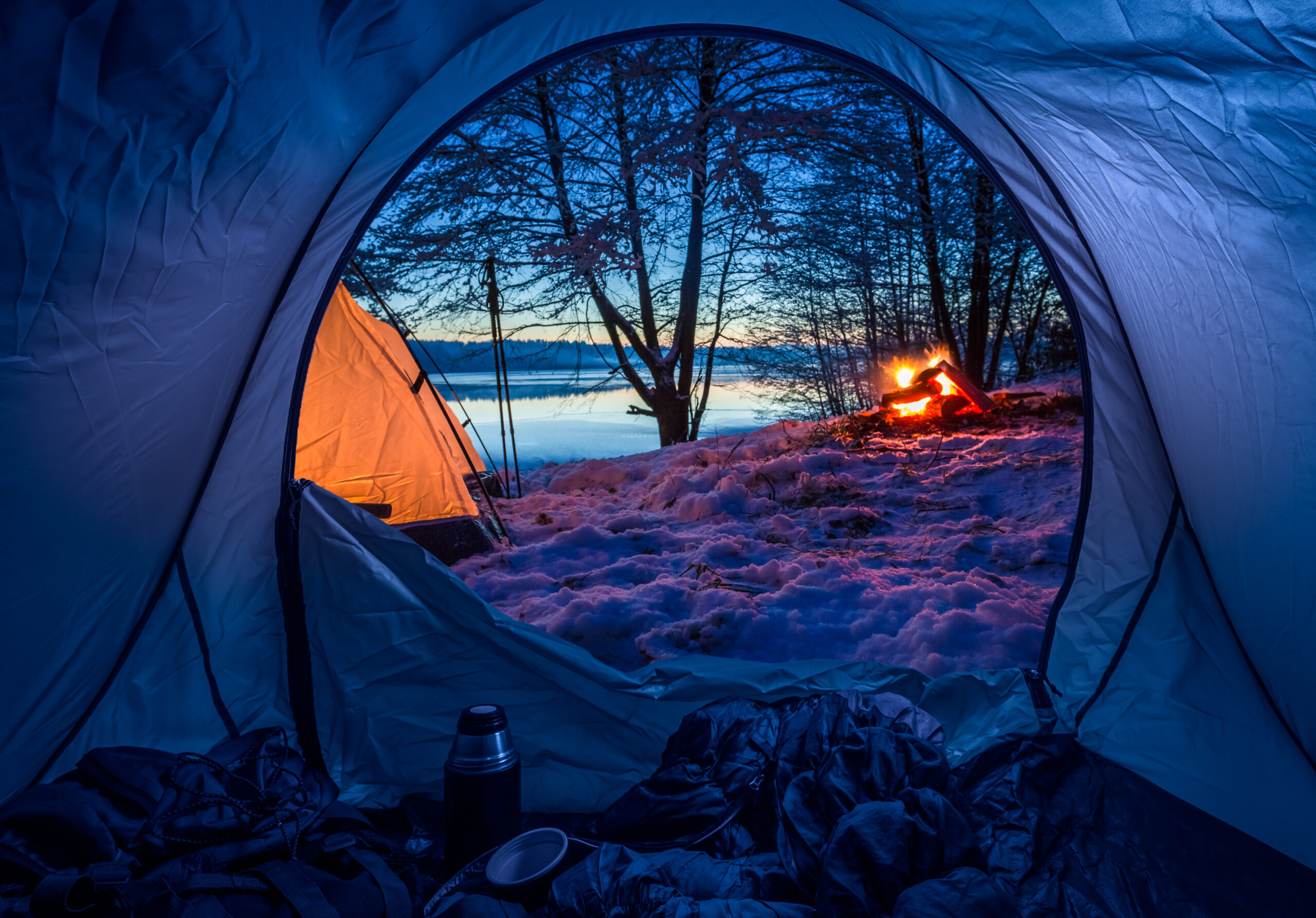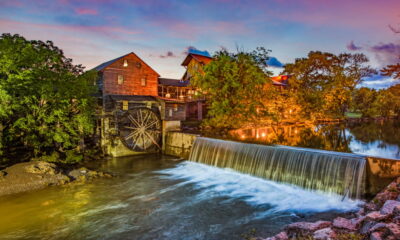Camping can be a great hobby for people that want to minimize their carbon footprint. A couple of years ago, we talked about some great waste reduction tips if you are going on a camping trip.
Most of the same principles apply for sustainable consumers trying to go winter camping. However, people going on eco-friendly camping trips need to take different precautions during the winter.
Enjoy Your Eco-Friendly Camping Trip During the Winter Months
There exists a common belief that winter camping is something unreal or extreme. However, if you have the proper gear and plan ahead, cold weather camping can be both a fun way to get your friends together and a gorgeous getaway for a lone traveler. There are no crowds, insects or snakes – just amazing scenery and blissful silence. Winter camping can also be eco-friendly if you plan it properly.
You should know that the most important thing about winter camping is careful preparation, especially if you are trying to minimize your carbon footprint and reduce pollution in the process. So, before you give it a go, make sure you’re well-prepared. In this guide, we’re sharing the steps on how to get ready for your first cold weather adventure. Also, we’ve prepared some hot tips on safe and comfortable winter camping.
Pick the Right Time and Place
When you’re choosing the site for your cold weather camping, be realistic: take into account your physical fitness, camping skills and experience. Even if you’re an expert summer camper, it’s reasonable to start small in the winter. So, pick a scenic and sheltered place for your winter camping trip that’s not far from retreat.
This isn’t just important for you to stay comfortable. You will use less energy by burning less fuel on your trip if you don’t camp where it is too cold.
Make sure that you know the local climate: day and night temperatures, wind and precipitation patterns. However, even if you’re prepared for typical winter weather at a certain place, regularly check the weather forecast to avoid troubles like getting stuck in a blizzard.
Get a Reliable All-Season Tent
A four-season tent is the number one gear for cold weather camping. Your wildlife shelter must have a robust frame to withstand high winds and snow build-up, and a reduced mesh area for a warmer, more protected interior environment. Also, it’s a good solution to get a winter tent with stove. A tent heated by a wood-burning stove is a much more efficient way to keep warm and cook than an open fire outside. With a stove, you’ll burn a way less fuel, which means gathering less firewood. Undoubtedly, it saves your time and effort, and is more environmentally friendly.
Don’t Forget About the Sleeping Bag

We recommend getting a sleeping bag that is rated at least 10°F lower than the coldest temperature you might expect. It will ensure your comfort on cold winter nights, and you can always vent the bag in case you get too warm. However, if you’re not sure that your sleeping bag is warm enough, you can use a sleeping bag liner. It will add extra warmth, so you can wear less clothes while sleeping, and keep your bag cleaner. Also, if you’re planning to go camping in freezing weather, consider using a sleeping pad. It prevents your body from losing heat on snowy surfaces. Pads are rated by R-value. The higher the R-value, the better it insulates. For winter use, choose pads that have an R-value of 4.0 or higher.
Go For the Right Clothing
To stay dry and warm, dress in layers. When it comes to materials, leave the cotton behind – it takes a long time to dry. Instead, you can opt for synthetic, quick-drying fabrics. As an alternative, you can consider merino wool and bamboo clothes for your mid-layer. Get quality thermal underwear, a fleece jacket or a wool sweater, and waterproof breathable jacket and pants. Also, take care of gloves and socks, and don’t forget to take a couple of extra pairs. Finally, get warm, waterproof winter boots and a winter hat. A basic wool or synthetic beanie hat will work well, but make sure it covers your ears.
Food Matters
Nutritious food is critical for cold weather camping. You’ll need to consume double your typical caloric intake while making your way through deep snow or just trying to keep warm. Go for foods high in fat and protein: they are perfect for winter camping as they digest more slowly than carbohydrates. Beyond keeping you full longer, they raise your body temperature by requiring more energy to digest.
Bacon, deli meat, cheese, tofu, peanuts, stews, soups, sandwiches, chocolate, protein bars and dried fruit are the best options for cold weather camping. Another tip: go for crackers instead of bread, which can easily freeze. Finally, you’ll win time and save fuel if you precook major meals.
Winter Camping Tips & Tricks
So now when you know about winter camping essentials, it’s high time to walk you through the top winter camping tips and tricks.
- always make sure someone knows where you are going and when you plan to return
- don’t forget a lantern or a headlamp and some extra batteries
- always carry a basic first aid kit
- get an eco-friendly water heater for your camping trip
- use sunglasses and sunscreen to protect your eyes and skin from the sun rays reflected by snow
- cold and wind can damage your skin as well, so protect the exposed areas with vaseline
- instead of packing water in your backpack, you can melt snow (but take care of some extra fuel for that)
- when you feel that you’re starting to chill, go for a walk, do sit-ups or deep knee bends, it really works
- remember that electronics lose power faster in the cold, so consider taking a couple of power banks
- for the same reason, keep any gadgets in your sleeping bag or close
- use hot water bottles to keep you warm at night
- don’t risk getting dehydrated: drink enough water
- bring a small shovel to clear the snow for your tent site
- to keep your tent warm, fill the floor space: this will prevent your tent from losing heat
- turn your stove fuel and water containers upside down: ice builds up from the top down, so you’ll be able use them even if they start freezing
- if you use boot liners, take them out and put them into your sleeping bag so they aren’t terribly cold in the morning.
To Wrap it Up
Again, safe and enjoyable winter camping is all about thorough preparation. Take your time to choose the right gear, elaborately plan your camping menu, and bear in mind our tips to get the best winter camping experience.


 Environment9 months ago
Environment9 months agoAre Polymer Banknotes: an Eco-Friendly Trend or a Groundswell?

 Environment11 months ago
Environment11 months agoEco-Friendly Home Improvements: Top 7 Upgrades for 2025

 Features8 months ago
Features8 months agoEco-Friendly Cryptocurrencies: Sustainable Investment Choices

 Features9 months ago
Features9 months agoEco-Friendly Crypto Traders Must Find the Right Exchange































